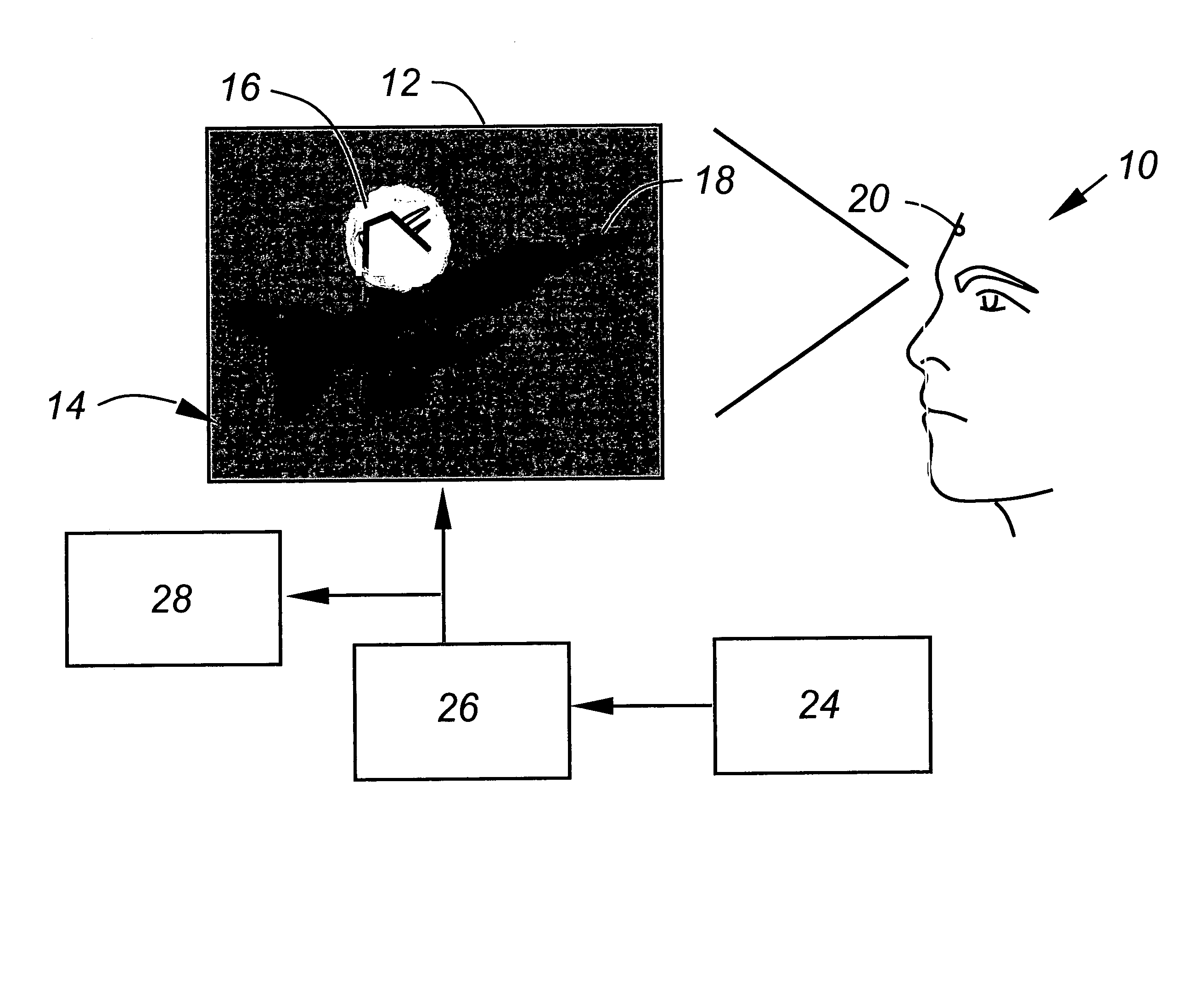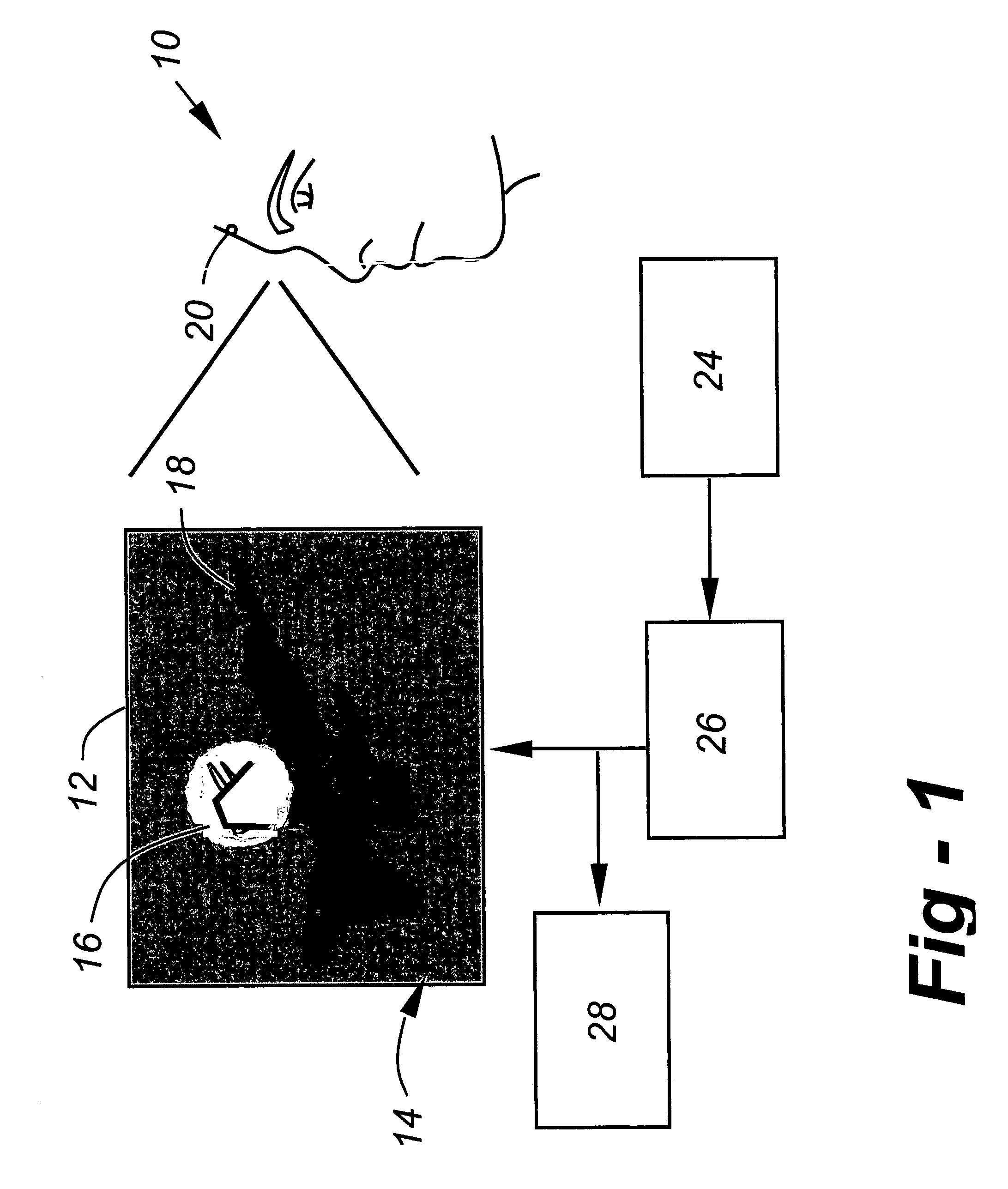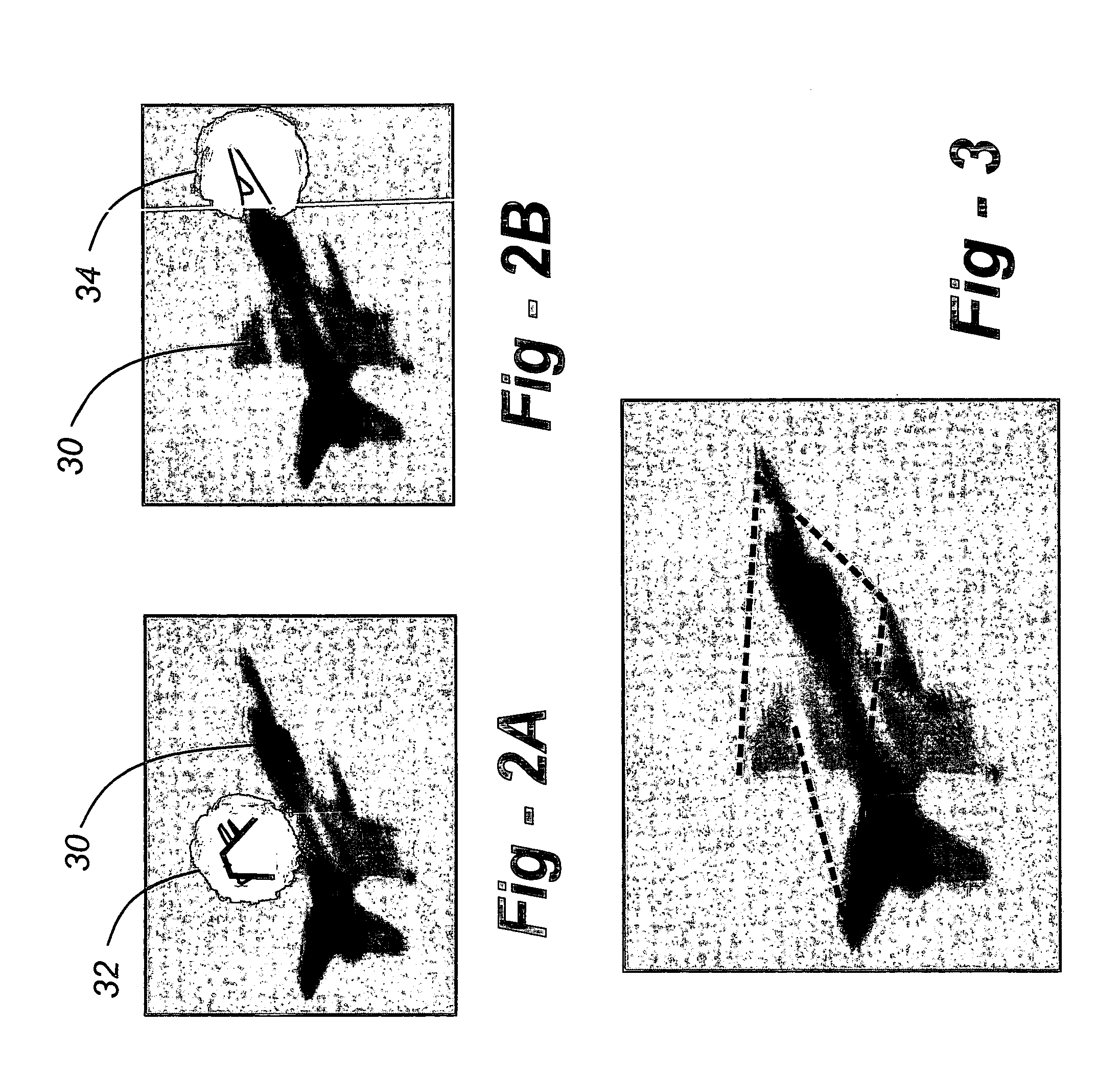Foveated display eye-tracking system and method
a technology of eye-tracking system and foveal position, which is applied in the field of foveal position eye-tracking system and method, can solve the problems of shortening the overall ability of the eye-tracking system to facilitate widespread use of this technology for training, requiring extensive image processing methods, and contemporary eye-tracking devices falling short of perfection. , to achieve the effect of simple recording of the foveal position
- Summary
- Abstract
- Description
- Claims
- Application Information
AI Technical Summary
Benefits of technology
Problems solved by technology
Method used
Image
Examples
Embodiment Construction
[0020]FIG. 1 is a schematic drawing of a subject generally indicated at 10, using the system of the present invention by observing a foveated display on a screen 12 such as a computer display screen. The image 14 displayed on the screen 12 has an area 16 that is in-focus and other areas 18 that are blurred. In the preferred embodiment, the foveated region 16 is circular in shape to correspond to the human retina. The subject 10 is positioned and directed so that the movement of the eyes to acquire visual information from the foveated image 14 is achieved by motions of the head which move the area 16.
[0021]The subject's head has a motion transmitter 20 attached. The signals generated by the transmitter 20 as the head moves, are picked up by a wireless receiver 24. The output of the receiver is provided to a foveated display generator 26. The foveated display generator 26 produces the image 14 with an in-focus area 16 surrounded by areas 18 that are blurred and moves the in-focus area...
PUM
 Login to View More
Login to View More Abstract
Description
Claims
Application Information
 Login to View More
Login to View More - R&D
- Intellectual Property
- Life Sciences
- Materials
- Tech Scout
- Unparalleled Data Quality
- Higher Quality Content
- 60% Fewer Hallucinations
Browse by: Latest US Patents, China's latest patents, Technical Efficacy Thesaurus, Application Domain, Technology Topic, Popular Technical Reports.
© 2025 PatSnap. All rights reserved.Legal|Privacy policy|Modern Slavery Act Transparency Statement|Sitemap|About US| Contact US: help@patsnap.com



